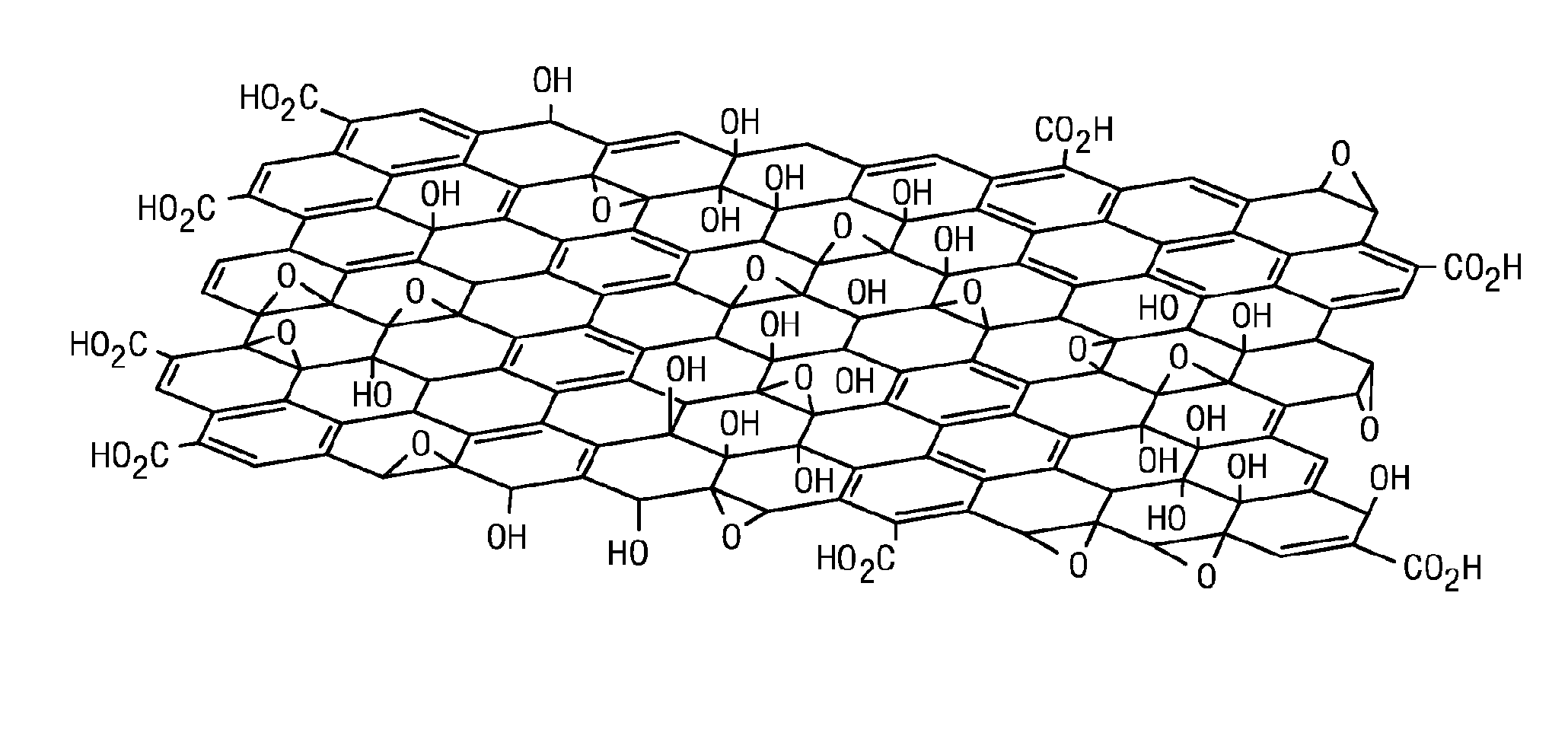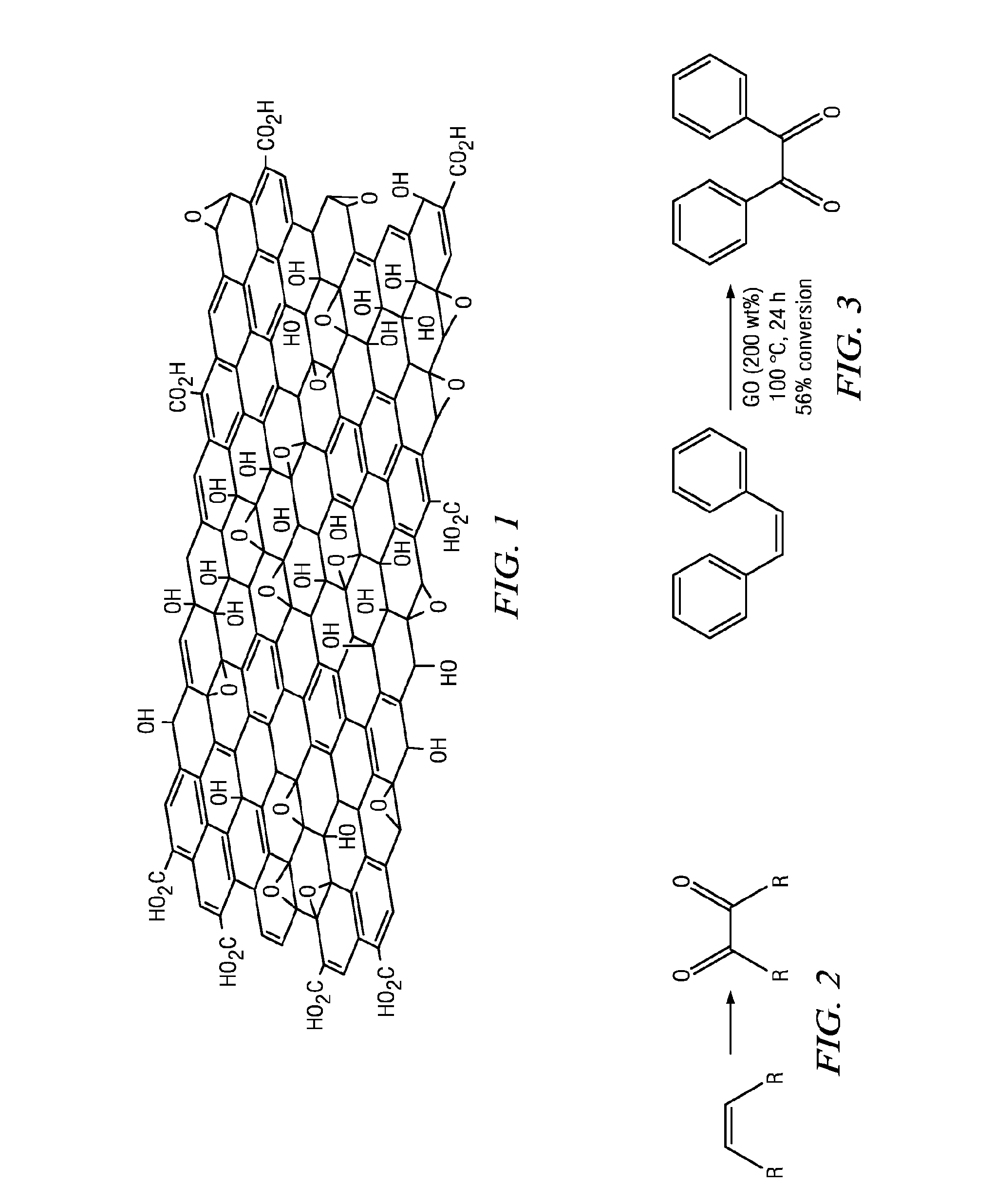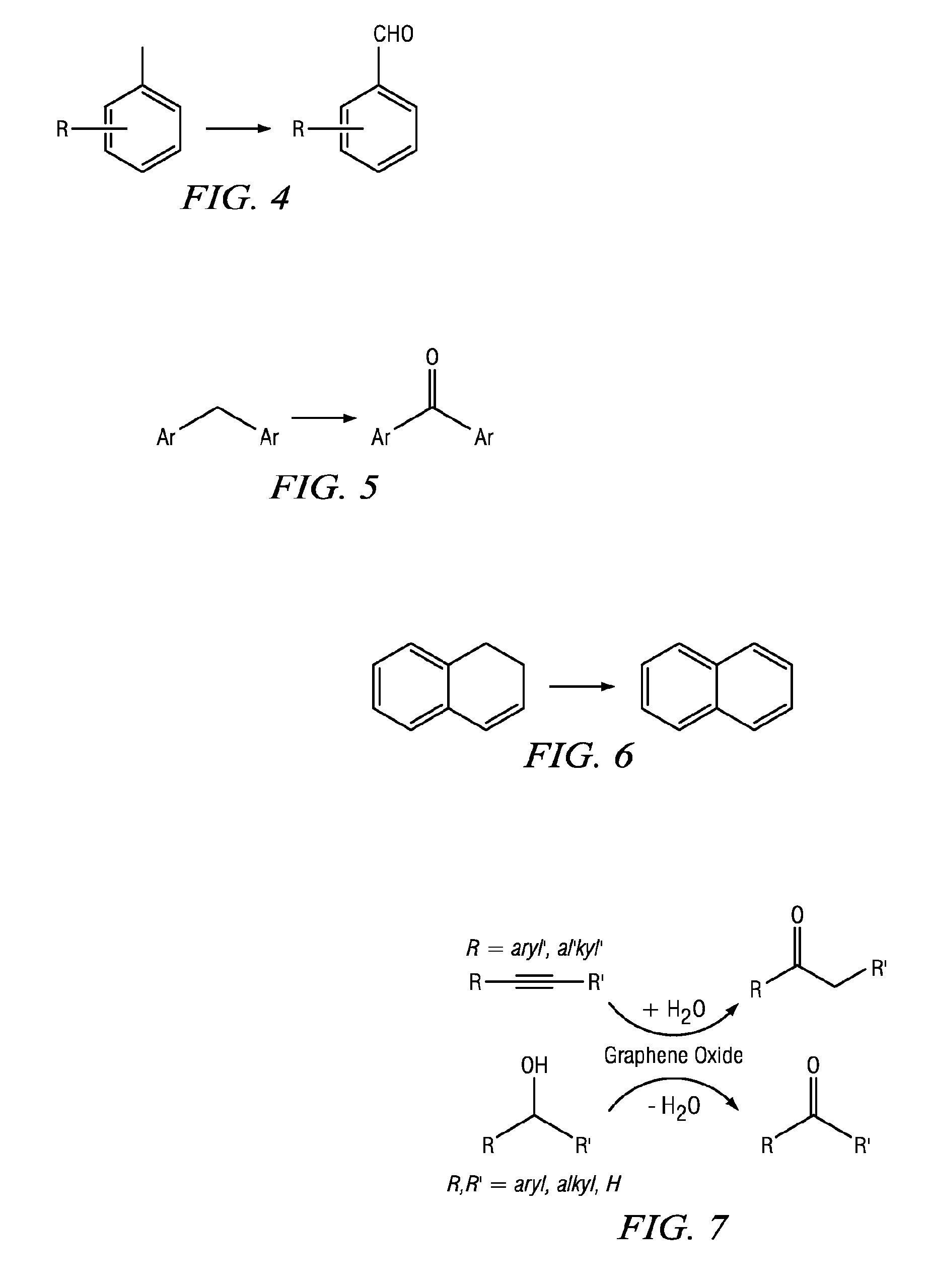Carbocatalysts for chemical transformations
a carbocatalyst and chemical technology, applied in the field of carbocatalysts for chemical transformation, can solve the problems of difficult separation from the reaction product, incompatibility between the catalyst and the reaction method, environmental incompatibility, etc., and achieve the effect of facilitating the oxidation of alkan
- Summary
- Abstract
- Description
- Claims
- Application Information
AI Technical Summary
Benefits of technology
Problems solved by technology
Method used
Image
Examples
example 1
Preparation of Graphene Oxide or Graphite Oxide Catalyst
[0238]The graphene oxide or graphite oxide used in some experiments contained in these examples was prepared according to the following method. Others were prepared using the Staudenmaier method. Both methods resulted in a suitable catalyst.
[0239]A modified Hummers method was used to prepare the graphite oxide. A 100 mL reaction flask was charged with natural flake graphite (3.0 g; SP-1, Bay Carbon Inc. or Alfa Aesar [99%; 7-10 μm]), concentrated sulfuric acid (75 mL), and a stir bar, and then cooled on an ice bath. The flask was then slowly charged with KMnat (9.0 g) over 2 h which afforded a dark colored mixture. The rate of addition was controlled carefully to prevent the temperature of the suspension from exceeding 20° C. After stirring at 0° C. for 1 h, the mixture was heated at 35° C. for 0.5 h. The flask was then cooled to room temperature and the reaction was quenched by pouring the mixture into 150 mL of ice water and ...
example 2
[0240]A 100 mL reaction flask is charged with natural flake graphite (6.0 g; SP-1, Bay Carbon Inc. or Alfa Aesar [99%; 7-10 μm]), concentrated sulfuric acid (25 mL), K2S2O8 (5 g), P2O5 (5 g), and a stir bar, and then the mixture is heated at 80° C. for 4.5 h. The mixture is then cooled to room temperature. Next, the mixture is diluted with water (1 L) and left undisturbed for a period of about 8-10 hours. The pretreated graphite is collected by filtration and washed with water (0.5 L). The precipitate is dried in air for 1 day and transferred to concentrated H2SO4 (230 mL). The mixture is then slowly charged with KMnO4 (30 g) over 2 h, which affords a dark colored mixture. The rate of addition is carefully controlled to prevent the temperature of the suspension from exceeding 10° C. The mixture is stirred at 0° C. for 1 h. The mixture is then heated at 35° C. for 2 h. The flask is then cooled to room temperature and the reaction is quenched by pouring th...
example 3
Preparation of Graphite Oxide
[0241]A 250 mL reaction flask is charged with natural flake graphite (1.56 g; SP-1 Bay Carbon Inc. or Alfa Aesar [99%; 7-10 μm]), 50 mL of concentrated sulfuric acid, 25 mL fuming nitric acid, and a stir bar, and then cooled in an ice bath. The flask is then charged with NaClO3 (3.25 g; note: in some cases NaClO3 is preferable over KClO3 due to the aqueous insolubility of KClO4 that may form during the reaction) under stirring. Additional charges of NaClO3 (3.25 g) are performed every hour for 11 consecutive hours per day. This procedure is repeated for 3 d. The resulting mixture is poured into 2 L deionized water. The heterogeneous dispersion is then filtered through a coarse fritted funnel or a nylon membrane filter (0.2 μm, Whatman) and the isolated material is washed with additional deionized water (3 L) and 6 N HCl (1 L). The filtered solids are collected and dried under high vacuum to provide a product (3.61 g) as a dark brown powder.
PUM
| Property | Measurement | Unit |
|---|---|---|
| temperature | aaaaa | aaaaa |
| time | aaaaa | aaaaa |
| time | aaaaa | aaaaa |
Abstract
Description
Claims
Application Information
 Login to View More
Login to View More - R&D
- Intellectual Property
- Life Sciences
- Materials
- Tech Scout
- Unparalleled Data Quality
- Higher Quality Content
- 60% Fewer Hallucinations
Browse by: Latest US Patents, China's latest patents, Technical Efficacy Thesaurus, Application Domain, Technology Topic, Popular Technical Reports.
© 2025 PatSnap. All rights reserved.Legal|Privacy policy|Modern Slavery Act Transparency Statement|Sitemap|About US| Contact US: help@patsnap.com



